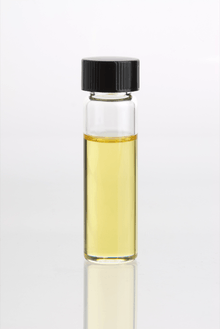Rhododendron subsect. Ledum
| Rhododendron subsect. Ledum | |
|---|---|
| | |
| Rhododendron columbianum (Ledum glandulosum) | |
| Scientific classification | |
| Kingdom: | Plantae |
| (unranked): | Angiosperms |
| (unranked): | Eudicots |
| (unranked): | Asterids |
| Order: | Ericales |
| Family: | Ericaceae |
| Genus: | Rhododendron |
| Subgenus: | Rhododendron |
| Section: | Rhododendron |
| Subsection: | Ledum (L.) Kron & Judd |
| Species | |
|
See text. | |
Ledum was a genus in the family Ericaceae, including 8 species of evergreen shrubs native to cool temperate and subarctic regions of the Northern Hemisphere and commonly known as Labrador tea. It is now recognised as a subsection of section Rhododendron, subgenus Rhododendron, of the genus Rhododendron.
Taxonomy
Reclassification into Rhododendron
Recent genetic evidence has shown that the species previously treated in this genus are correctly placed in the genus Rhododendron, where they are now treated as Rhododendron subsect. Ledum.[1]
Because some of the species names used in Ledum could not be used in Rhododendron (the names already having been used for other species already in this large genus), new names had to be coined for them.
Species
The species formerly listed in Ledum, with their current accepted names in Rhododendron, are:
- Ledum columbianum = Rhododendron columbianum (Piper) Harmaja[1]
- Ledum decumbens = Rhododendron subarcticum Harmaja
- Ledum glandulosum = Rhododendron columbianum (Piper) Harmaja[1]
- Ledum groenlandicum = Rhododendron groenlandicum (Oeder) Kron & Judd[1]
- Ledum hypoleucum = Rhododendron hypoleucum (Kom.) Harmaja
- Ledum macrophyllum = Rhododendron tolmachevii Harmaja
- Ledum palustre = Rhododendron tomentosum Harmaja
- Ledum palustre var. diversipilosum = Rhododendron diversipilosum (Nakai) Harmaja
- Ledum subulatum = Rhododendron subulatum (Nakai) Harmaja
Hybrids
One natural hybrid also occurs:
- Ledum columbianum = Rhododendron × columbianum (R. groenlandicum × R. neoglandulosum)
Uses

Some species (e.g. L. groenlandicum) have been used to produce Labrador tea. Other species have varying levels of toxicity (e.g. L. glandulosum). Evergreen Labrador Tea grows slowly, but retains its leaves year-round. Users should take care not to over-harvest leaves from any single plant.
Ledum spp. often grow together with poisonous plants such as bog-laurel and bog-rosemary, but certain species (e.g. L. groenlandicum and L. palustre) are easily distinguished by the distinctive rust coloured fuzz on the bottom of leaves.
According to a Russian study from 1991, Ledum was able to almost completely inactivate the tick-borne bacterial infection caused by Borrelia, involved in the pathogenesis of Lyme disease.
Bibliography
- Kron, Kathleen A. & Judd, Walter S. (1990) Phylogenetic Relationships within the Rhodoreae (Ericaceae) with Specific Comments on the Placement of Ledum Systematic Botany (1990), 1S(1): pp. S7-68
- Harmaja, Harri (1990) New names and nomenclatural combinations in Rhododendron (Ericaceae) Ann. Bot. Fennici 27:203-204
- Harmaja, Harri (1991) Taxonomic notes on Rhododendron subsection Ledum (Ledum, Ericaceae), with a key to its species. Ann. Bot. Fennici 28: 171-173.
- Harmaja, Harri (1999) Rhododendron diversipilosum, comb. nov. (Ericaceae). Ann. Bot. Fennici 35: 263-264
- Harmaja, Harri (2002) Rhododendron subulatum, comb. nova (Ericaceae). Ann. Bot. Fennici 39: 183-184
- Kihlman, Bengt A. (2004) Hybrids Between Ledums and Lepidote Rhododendrons. Journal of the American Rhododendron Society 58(2):74-81
- Fokina, GI. Vopr Virusol, (1991) Experimental phytotherapy of tick-borne encephalitis
References
- 1 2 3 4 Walter S. Judd and Kathleen A. Kron (2009), "Rhododendron Linnaeus, Sp. Pl. 1: 392. 1753; Gen. Pl. ed. 5, 185. 1754", Flora of North America online, 8